One of the great things about the trumpet is its many variations and manifestations. There is no such thing as “the” trumpet, rather a collection of related instruments with different tunings, modifications and mechanics that have evolved through time. Contemporary music has also driven composers and players to keep pushing the boundaries of the instrument, leading to new and exciting innovations in instrument design.
In this list I’ll introduce the standard instrument types as well as the more common auxiliary instruments. By no means does this cover all available manifestations of the trumpet: I’ve been collecting instruments for many years and still don’t have them all!
Trumpet in Bb or C (piston valve)
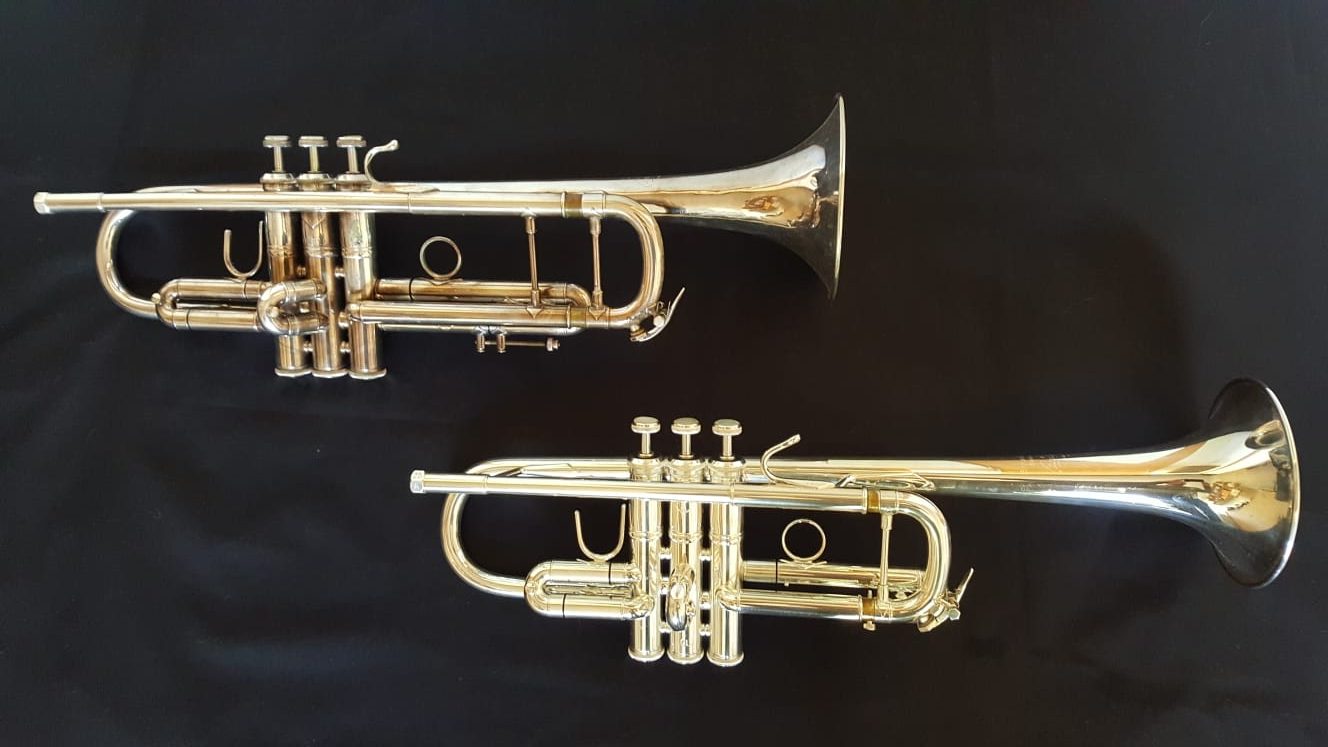
This is the standard equipment of professional players active in contemporary music. For decades it was considered standard to write for the Bb trumpet, but in recent years the C trumpet has become the favored instrument among most contemporary players. This probably has to do with the C trumpet’s small advantage in accessing the higher range and its generally lighter and more flexible feel for the player. There is very little difference in sound between the Bb and C trumpets.
Special Considerations:
Orchestral players in the German speaking world tend to play rotary valved trumpets instead of the piston valved trumpets pictured above. As well as presenting a subtle timbral difference, rotary valved trumpets can be somewhat awkward when used in contemporary music because the players need to have both hands on the instrument while playing. This hinders extended techniques that require the left hand as well as fast mute changes and mute manipulation, something which should be kept in mind when writing for orchestras in German speaking countries.
Cornet
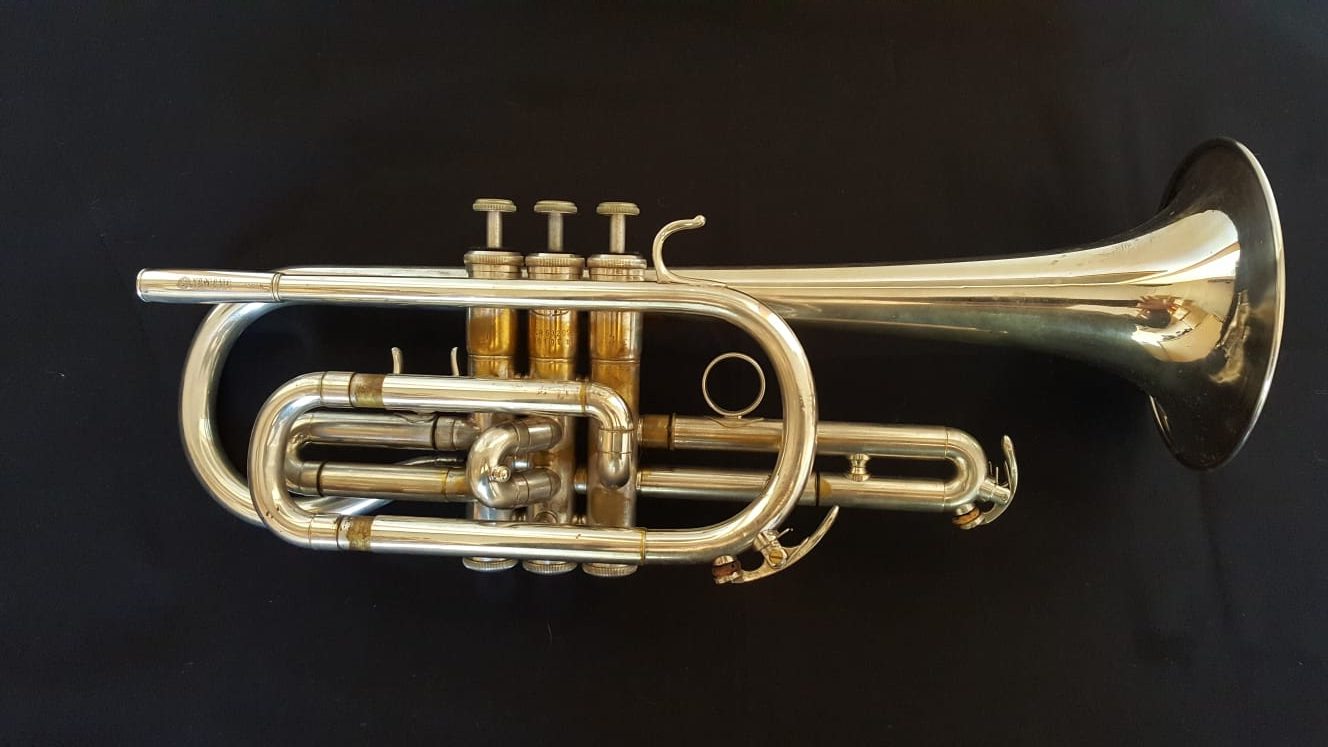
The cornet is actually very closely related to the French horn (it was originally a valved post-horn), though it is generally only played professionally by trumpet players. Due to the conical bore, the cornet has a more mellow, horn-like sound compared to the trumpet. The most common cornets are in Bb, though many come with leadpipe and crooks that enable you to tune to A. Cornets in C and Eb are also available, though quite rare. The cornet is (unfortunately) not commonly used in contemporary music.
Special Considerations:
Though virtually all trumpet players can also play cornet (the fingerings are identical to those of the trumpet), this doesn’t mean they necessarily own one! In practice, most players will have no trouble finding a cornet for a gig if they need one.
Flugelhorn
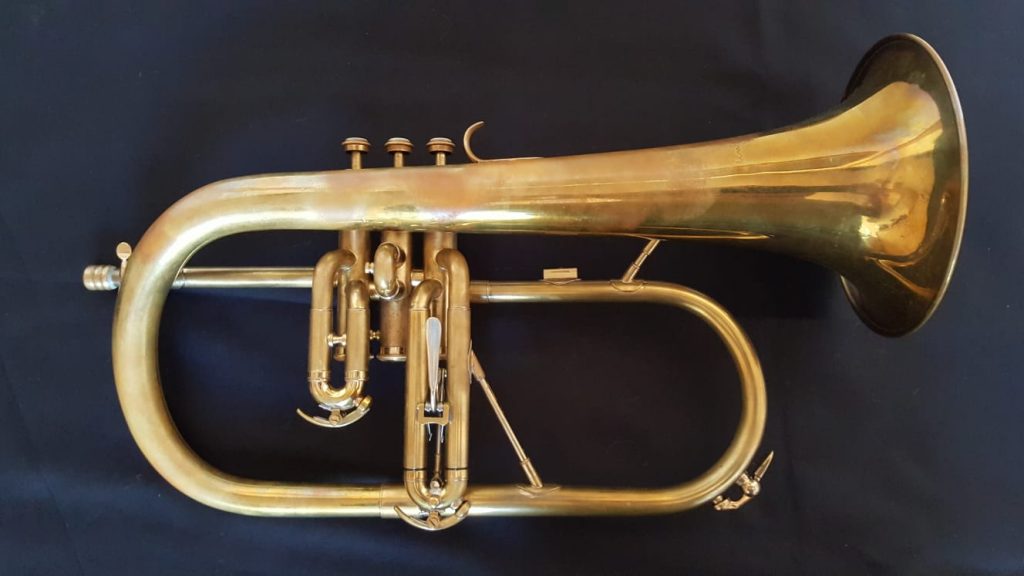
The flugelhorn has the same range as the Bb trumpet and is also fingered identically. The bell is much larger than that of the trumpet and, like the cornet, it has a conical bore, which results in an even warmer, mellower, “horn-like” sound than the cornet.
Special Considerations:
Most flugelhorns have intonation issues and are somewhat less reliable in the upper register than the trumpet. There are fewer mutes produced for flugelhorn, though some are available. Typically, the valve slides of a flugelhorn point downwards, as opposed to horizontally outwards from the instrument.. This prevents them from being manipulated in the same way as a trumpets valve slides. Usually the 3rd valve slide can be moved while playing, but not quite as far as with the trumpet. This can greatly limit the possible micro-tones available on the instrument.
The Quarter-Tone Flugelhorn, originally developed by Markus Stockhausen, has a fourth valve which lowers the pitch approximately one quarter-tone.
Special Considerations:
Whilst most professional players will own or have access to a flugelhorn, the quarter-tone flugelhorn is very rare and must be custom built.
Trumpet in D / Eb
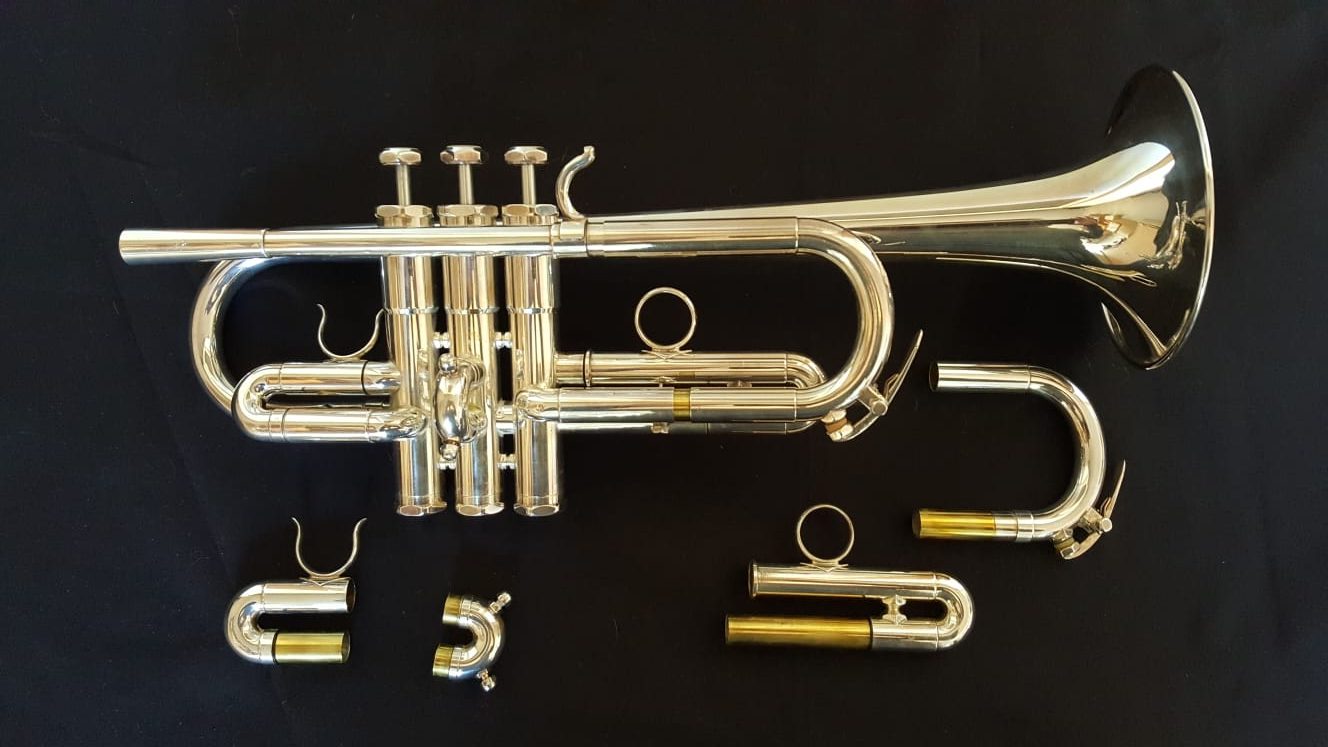
Both D and Eb tunings are generally available on this instrument through simply changing the leadpipe (or, on some models, the valve slides and tuning slide). It is used mainly in orchestral repertoire, though it can also come in handy for contemporary works which make use of the extreme high register .
Special Considerations:
Not all professional players own a D/Eb trumpet. When composing extensively in the high register, consider using the piccolo trumpet as it is more widely owned and used by trumpeters. If using mutes, check with the player which mutes will fit their instrument.
Piccolo Trumpet in A / Bb
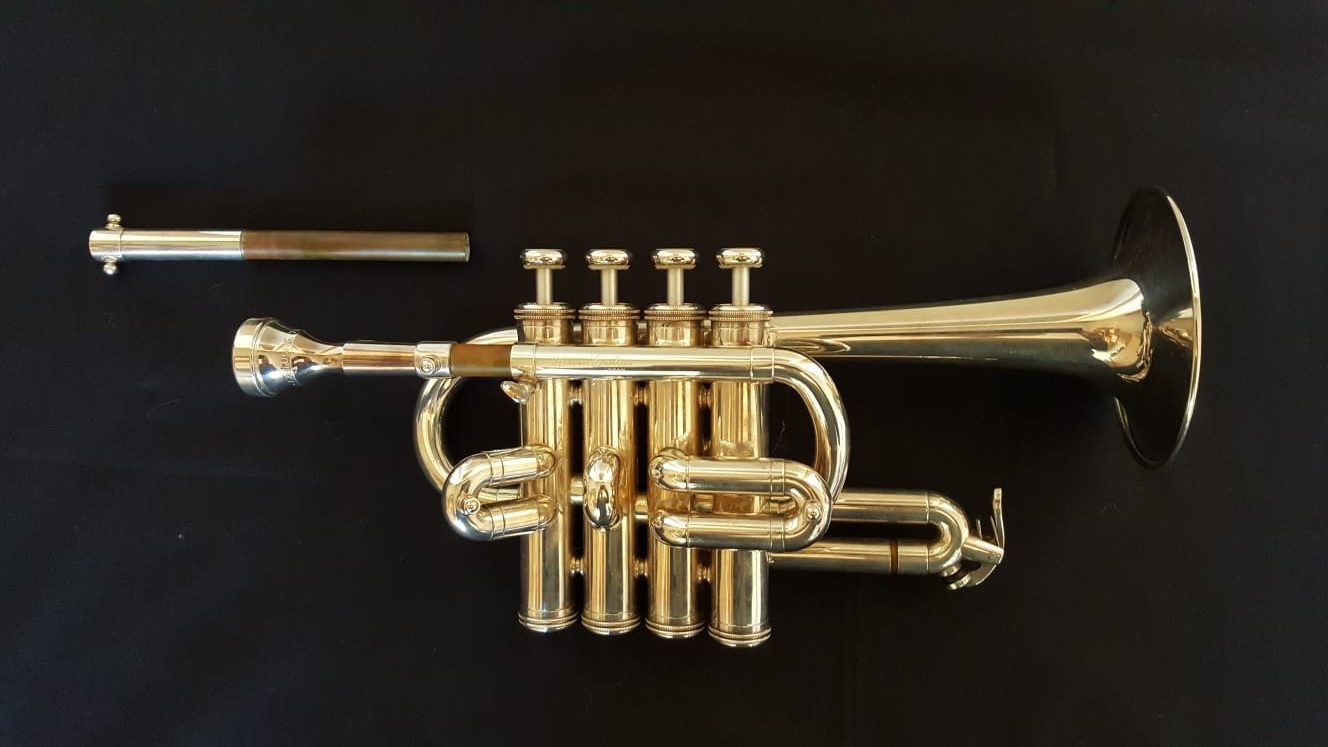
The piccolo trumpet was invented to make early music, originally written for the natural trumpet, more accessible to modern players. Most instruments can be tuned to both A and Bb by changing the leadpipe. Piccolo trumpets in G, F and high C also exist, but are quite rare.
Special Considerations:
Most professional players will own or have access to a piccolo trumpet. On most piccolo trumpets the slides are not typically movable while playing, making slide glissandi impossible, and microtonal writing very tricky. If you want to write microtones for the piccolo, I would strongly recommend trying them out first with a trumpeter. Virtually all mute types are also available for piccolo trumpet.
Double-Bell Trumpet in C
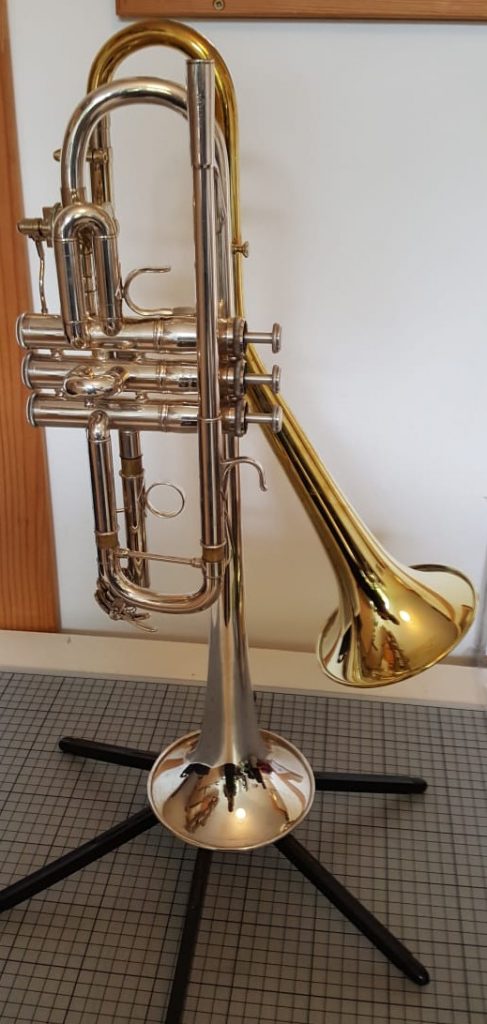
There have been several attempts to add more bells to the trumpet throughout the history of the instrument. The double-bell trumpet currently used by contemporary music trumpeters was developed by trumpeter Marco Blaauw. A second bell is attached to the trumpet next to (or above) the original bell with a valve that allows the player to rapidly switch between the two bells. By muting one bell, or putting different mutes in each bell, a fast sound-color change can be achieved. On some models, the second bell can be adjusted to point in a different direction from the original bell, creating a stereo effect.
Special Considerations:
Though this instrument is gaining popularity, most players do not own a double-bell trumpet, and it must be custom built. Double-Bell trumpets are usually in C.
Slide Trumpet in Bb
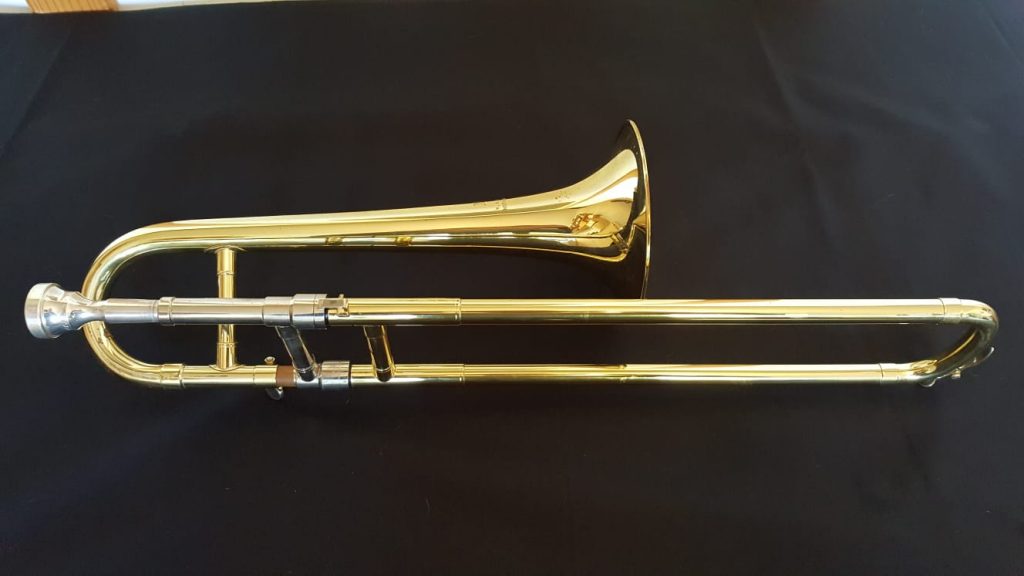
The slide trumpet is essentially a soprano trombone with a normal trumpet mouthpiece. The range is the same as a Bb trumpet and all mutes for the trumpet will fit.
Special Considerations:
Most players do not own a slide trumpet. Even those who have the instrument will find it difficult to use the slide, as it is a completely different technique to normal trumpet playing. Virtuosic writing is therefore not advised. It is nearly impossible to manipulate mutes (wah-wah, plunger, etc.) while playing. The high register (above Bb”) is especially unreliable.
Quarter-Tone Valves
As microtonal writing for the trumpet gets more complex, some players have added an extra valve to their instrument which lowers the pitch approximately one quarter-tone. The valve is typically added to the tuning slide and is manipulated with a trigger. Some trumpet builders have opted to add a fourth valve instead of a trigger on the tuning slide.
Special Considerations:
Though the quarter-tone valve certainly facilitates rapid microtonal playing, it also has its drawbacks. Depending on how its made, the quarter-tone valve can only be precise in a certain range and for certain fingerings. In the lower range, using the valve will tend to lower the pitch somewhat less than a quartertone, while in the higher range it lowers the pitch somewhat more than a quartertone. Using the trigger also limits the players manipulation of the valve slides, which can further limit pitch accuracy. Most players do not have a trumpet with a quarter-tone valve and may not have access to one.
Microtonal playing on the trumpet is certainly possible without the use of a quarter-tone valve, which I will write about in an upcoming post.
I hope this has given you an insight into the wonderful and ever-changing world of trumpet design and the possibilities of the many various instruments that contemporary players have access to. Remember, most players will not own all these instruments, but may be able to get access to a fair number of them, so as always, it’s best to talk to your trumpeter before deciding which instrument to use.

I am upset that the natural trumpet was only given cursory attention in this article. I started playing natural, or “baroque” trumpet in the early 1970’s. In my experience most players are at least familiar with the instrument and many own one. Sophisticated players are aware of the advantages and limitations of the baroque trumpet. The late musicologist/performer Edward Tarr told me in a radio interview I made for WOSU players would gain insights of style and technique which lead from the instrument itself. Attention to style and timbre can be applied by informed players when using valved trumpets if they are familiar with the baroque trumpet. These players avoid absurd ornamentation because they know the capabilities of the period instrument. Understandably many professional trumpet players are not willing to put their reputations on the line by playing a period trumpet in public unless they have studied Early Music performance at the professional level. They can make informed performances simply by becoming familiar with the baroque trumpet.
Hi Michael,
thanks for your comment! I’m sorry that the article upset you. As you can see from the rest of the content on my page, the blog is focused primarily on helping composers understand extended technique for modern trumpet composition. Although I’ve played natural trumpet in a few modern pieces, it comes up extremely rarely, and I find a detailed explanation of the instrument not necessary for the purposes of this blog.
I completely agree with you that players can learn a lot of insight into modern trumpet playing by learning the natural trumpet. I’ve played natural trumpet professionally for around 15 years now, both in my chamber orchestra for classical repertoire as well as in historical performance practice settings.
Take care and keep buzzing!
Nathan